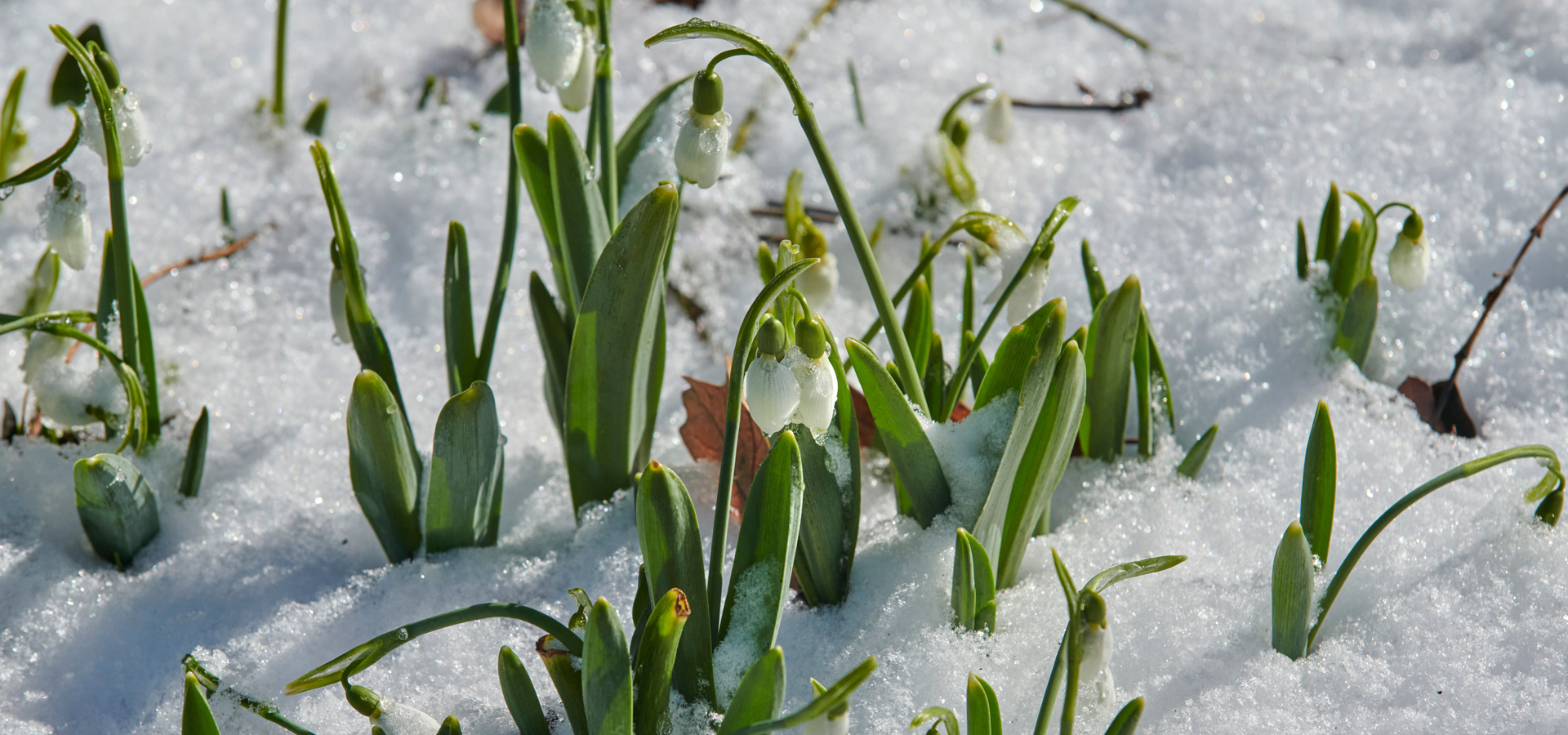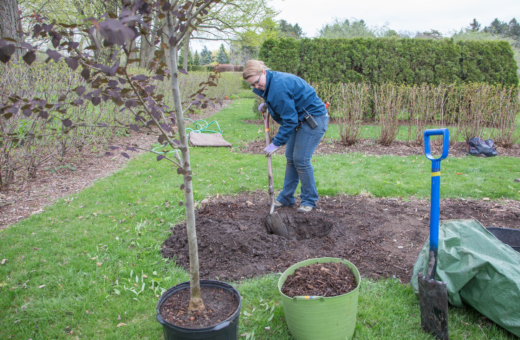Keep Plants Safe as Temperatures Swing in Spring Weather
As temperatures rise in late winter and early spring, plants begin to sprout. The green tips of crocus and daffodil leaves are poking above the mulch. Snowdrops are even blooming. It feels like spring is on the way. There’s just one problem: Winter weather can still return.
Chicago winter weather is extremely variable. Hard freezes and heavy snow are common in springtime, even into April. On average, the last frost in the Chicago area doesn’t occur until mid-May. But that doesn’t mean those emerging daffodils are doomed.
Here are some tips from the Plant Clinic of The Morton Arboretum on ways to protect your plants through the ups and downs of spring weather.
Leave mulch in place. The biggest danger for plants in spring is sprouting or blooming too soon, exposing them to damaging hard freezes. Warming soil is a major cue that wakes up plants, so mulch, which insulates the soil to keep it cooler longer, is a major protection. It also shelters slow-growing plants against cold spells. Leave mulch and other winter protections in place until nighttime low temperatures are consistently above freezing.
Finish pruning. If you have shrubs that need tidying or that have dead wood or broken branches, get your pruning done while the plants are still dormant, before leaves emerge. Dormant pruning will stress plants less than pruning while they are actively growing in spring.
Worry about cold, not snow: The danger to your plants is that low temperatures will damage new leaves, early blooms, or soon-to-open buds by freezing water in their tissues. Although a late snowfall looks more like winter, it is actually much less likely to harm your garden plants than cold will. Snow is rarely cold enough to damage plants and provides insulation and protection for low-growing plants against plummeting temperatures and harsh winds. Spring snowfalls tend to melt quickly, providing plants with moisture as they start growing.
Pay attention to weather forecasts. The actual weather, not traditional garden calendars or adages, should guide your gardening. Focus especially on the lowest predicted nighttime temperatures;even if the weather is T-shirt warm during the day, it can still get cold enough to harm plants after the sun goes down. Keep some form of protection handy that you can spread over especially vulnerable plants if a cold snap is predicted. Purchased floating row covers, old sheets, or dry leaves heaped over young plants all work well.
Don’t stress about bulbs: Most spring bulb plants such as daffodils and snowdrops are relatively winter-hardy. They are native to places in Eurasia that also have tough winters. The flowers emerge after the leaves, so even if cold damages the leaf tips, the blooms will likely still be safe below ground. You can improve protection for bulb flowers by spreading a layer of mulch over the soil when you plant them in fall.
Choose hardy plants: Make sure all the plants you choose for your garden are labeled as hardy for the region where you live. The Chicago area is generally in USDA Winter Hardiness Zone 5, which means we can use plants labeled for zones 5, 4, and 3. It’s true that the climate is changing and the growing season now starts, on average, a little earlier, but spring weather is so volatile and the risk of cold spells is still so great that it’s a bad idea to try more tender plants. Plants that bloom early, such as magnolias, are in more danger now, because blooming earlier exposes them to the late freezes that still are possible.
Wait to plant. Resist the temptation to get an early start on the garden. Digging in early spring when the soil is often wet can damage the soil structure. Wait until the soil has dried out. In a few weeks, you will likely be able to begin planting or transplanting trees and shrubs, dividing existing perennials, and sowing cold-season vegetable crops such as carrots and cabbage. Keep tender plants indoors until nighttime temperatures are consistently well above freezing and, even then, keep your overnight protection handy.



